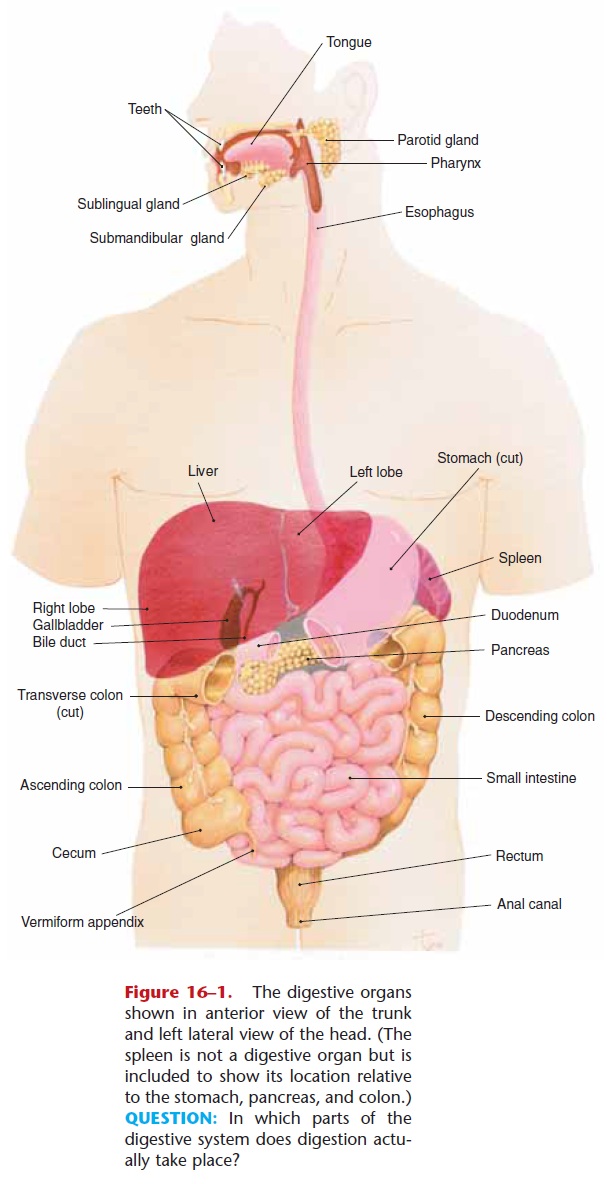Chapter: Essentials of Anatomy and Physiology: The Digestive System
Types of Digestion
TYPES OF DIGESTION
The food we eat is broken down in two complementary processes: mechanical digestion and chemical digestion. Mechanical digestion is the physical break-ing up of food into smaller pieces. Chewing is an example of this. As food is broken up, more of its sur-face area is exposed for the action of digestive enzymes. The work of the digestive enzymes is the chemical digestion of bro-ken-up food particles, in which complex chemical mol-ecules are changed into much simpler chemicals that the body can utilize. Such enzymes are specific with respect to the fat, protein, or carbohydrate food mole-cules each can digest. For example, protein-digesting enzymes work only on proteins, not on carbohydrates or fats. Each enzyme is produced by a particular diges-tive organ and functions at a specific site. However, the enzyme’s site of action may or may not be its site of production. These digestive enzymes and their func-tions are discussed in later sections.
END PRODUCTS OF DIGESTION
Before we describe the organs of digestion, let us see where the process of digestion will take us, or rather, will take our food. The three types of complex organic molecules found in food are carbohydrates, proteins, and fats. Each of these complex molecules is digested to a much more simple substance that the body can then use. Carbohydrates, such as starches and disac-charides, are digested to monosaccharides such as glu-cose, fructose, and galactose. Proteins are digested to amino acids, and fats are digested to fatty acids and glycerol. Also part of food, and released during diges-tion, are vitamins, minerals, and water.
We will now return to the beginning of the alimen-tary tube and consider the digestive organs and the process of digestion.

Related Topics